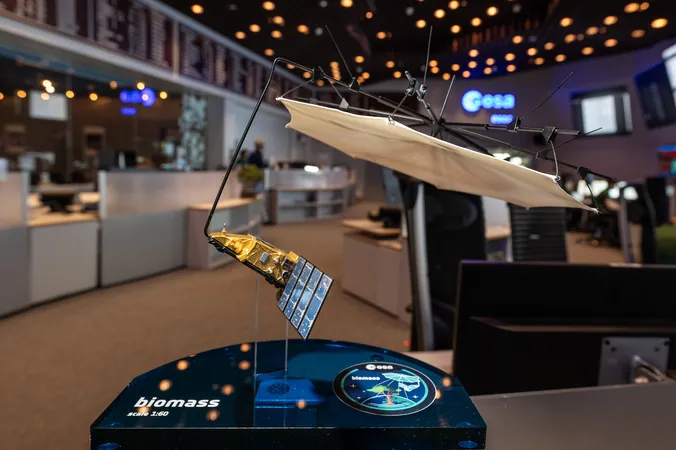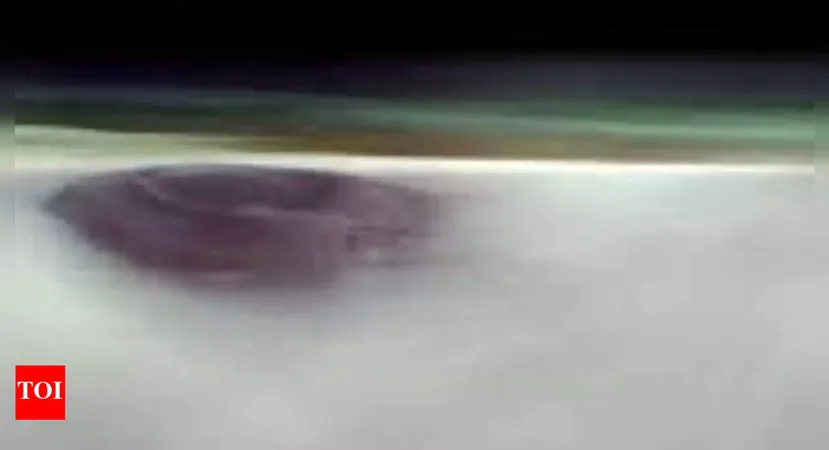
Biomass Satellite Triumphs in Intense Relay Race to Orbit
2025-05-09
Author: Rajesh
In a stunning feat of engineering and teamwork, ESA's Biomass satellite has officially completed its Launch and Early Orbit Phase (LEOP) after a grueling nine-day journey through the cosmos, showcasing just how complex and exhilarating rocket science can be.
The Thrill of Launch: A Flawless Liftoff
On April 29, at precisely 11:15 CEST, the Biomass satellite launched without a hitch and separated from its rocket at 12:13 UTC, signaling the transition of control to ESA’s mission control team at the European Space Operations Centre (ESOC). The moment was electrifying as mission operators swiftly sprang into action, ready to ensure the satellite’s success.
Four Days of Precision and Teamwork
The first four days of LEOP were a whirlwind of intensive checks and calibrations. The team worked around the clock, organizing into three shifts to stabilize the satellite and verify critical systems. Unlike other missions that typically span three to four days, Biomass took an extraordinary nine days to deploy its massive 12-meter antenna, requiring careful planning and execution. "It was a marathon schedule, but one that gave the reflector deployment the care it deserved," said Biomass Spacecraft Operations Manager, Elia Maestroni.
Antenna Deployment: The Critical Phase
With the satellite stabilizing, the focus shifted to the satellite's reflector deployment—an intricate operation lasting five days. The team meticulously deployed a 7.5-meter supporting boom one segment at a time, ensuring precision at every stage. Each deployment window was only 24 minutes long, adding to the tension of the moment. As the team sent the command to unfurl the reflector, the collective heartbeat quickened until, 37 minutes later, confirmation arrived: the antenna had deployed flawlessly!
Navigating Space Debris Concerns
During this delicate phase, Biomass faced the added challenge of navigating a treacherous field of space debris. At an altitude of 666 km, the team's mission was compounded by the risk of collision, as the satellite couldn’t perform avoidance maneuvers during critical moments. With busy orbital paths, ESA's Space Debris Office was instrumental in maintaining a vigilant watch, highlighting the inherent challenges of operating in crowded space.
Celebration and New Beginnings
With the reflector now deployed, the Biomass team finally exhaled. The final touches were put in place as the satellite's GNSS receiver was activated for precise orbit positioning. In a celebratory ceremony at ESA’s Main Control Room, Biomass Flight Operations Director, José Morales, praised the team's flawless execution and effective collaboration.
What Lies Ahead for Biomass
While LEOP concluded successfully, the journey for Biomass continues. It has entered a six-month commissioning phase, which will include flyovers of a specially designed transponder in New Norcia, Australia, crucial for calibrating its advanced P-band radar. This technology will provide invaluable insights into global forest conditions and significantly advance our understanding of environmental health.



 Brasil (PT)
Brasil (PT)
 Canada (EN)
Canada (EN)
 Chile (ES)
Chile (ES)
 Česko (CS)
Česko (CS)
 대한민국 (KO)
대한민국 (KO)
 España (ES)
España (ES)
 France (FR)
France (FR)
 Hong Kong (EN)
Hong Kong (EN)
 Italia (IT)
Italia (IT)
 日本 (JA)
日本 (JA)
 Magyarország (HU)
Magyarország (HU)
 Norge (NO)
Norge (NO)
 Polska (PL)
Polska (PL)
 Schweiz (DE)
Schweiz (DE)
 Singapore (EN)
Singapore (EN)
 Sverige (SV)
Sverige (SV)
 Suomi (FI)
Suomi (FI)
 Türkiye (TR)
Türkiye (TR)
 الإمارات العربية المتحدة (AR)
الإمارات العربية المتحدة (AR)